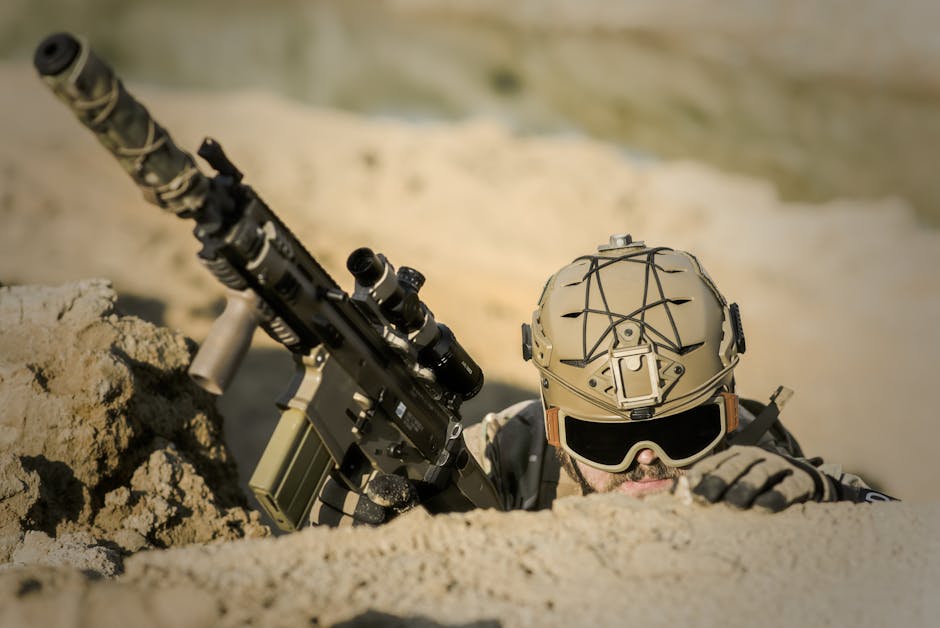
The Evolution of Armed Forces Gear: From Battlefield to Streetwear
Share
Historical evolution of armed forces gear
Military gear has a long history of influence on fashion trends, evolving from battlefield utility to streetwear style. Elements like camouflage patterns, cargo pockets, and military jackets have made their way into everyday clothing. Brands often draw inspiration from military uniforms, adapting them into fashionable pieces. This blending of military and civilian styles creates a distinctive look that has remained popular for decades.
Innovation and technology in armed forces gear
In the world of armed forces gear, innovation and technology play crucial roles. The development of new materials and technologies has led to gear that is more lightweight, durable, and effective in various environments. Military gear often sets trends in the world of fashion and streetwear, with many brands drawing inspiration from the functionality and design of military uniforms and equipment. From advanced fabrics that enhance performance to cutting-edge tactical gear that merges function with style, the evolution of armed forces gear continues to influence not only the battlefield but also the world of streetwear.
Influence of armed forces gear on fashion
Military-inspired clothing has been a significant influence on fashion trends for many years. The rugged and functional designs of armed forces gear have seamlessly transitioned from the battlefield to the runway, making a bold statement in streetwear fashion. Camouflage patterns, combat boots, and utility pockets are just a few examples of how military apparel has made its way into everyday clothing. Designers often draw inspiration from military uniforms, incorporating elements like epaulettes and olive green color palettes into their collections. The adaptability and durability of armed forces gear have made it a timeless fashion trend that continues to evolve and influence the way we dress.
Transition from battlefield to streetwear
Military gear has made its way from war zones to everyday fashion. Camouflage patterns, cargo pants, and combat boots are now commonly seen on city streets. Military-inspired fashion has evolved beyond functionality to become a popular style choice. The transition from the battlefield to streetwear reflects a cultural shift in how we perceive and incorporate military elements into our daily lives.
Iconic armed forces gear pieces
Some iconic armed forces gear pieces have seamlessly transitioned from military use to everyday streetwear fashion. Items like the M-65 field jacket, originally designed for soldiers in harsh conditions, are now popular for their durability and classic style. The MA-1 bomber jacket, known for its lightweight yet warm design, has also become a staple in urban fashion. Additionally, the combat boots, famous for their ruggedness and ankle support, have found their way into mainstream fashion, adding a touch of military flair to casual outfits. These gear pieces have stood the test of time, evolving from functional military essentials to timeless fashion statements.
Collaboration between military and fashion brands
When military and fashion brands join forces, it brings unique styles that blend functionality with aesthetics. These collaborations introduce military-inspired elements such as camo patterns, utility pockets, and durable fabrics into trendy streetwear designs. The partnership often results in edgy and versatile clothing pieces that appeal to a wide range of fashion enthusiasts, bridging the gap between battlefield practicality and urban style.
Cultural impact of armed forces gear in streetwear
Military clothing and accessories have had a significant influence on street fashion, blending functionality with style. Here are a few ways armed forces gear has made its mark in streetwear:
- Camouflage Patterns: Camo prints, once exclusive to the military, are now a staple in streetwear fashion, adding a rugged edge to everyday looks.
- Utility Pockets: The practicality of cargo pants and jackets with multiple pockets has been adopted by streetwear brands, offering both style and convenience.
- Combat Boots: Originally designed for soldiers, combat boots have become a fashion statement, adding a tough and rebellious touch to streetwear outfits.
The cultural impact of armed forces gear in streetwear showcases a blend of practicality and style, giving rise to a unique fashion subculture.
Sustainability in armed forces gear production
Producing armed forces gear sustainably involves using materials and methods that minimize harm to the environment. Manufacturers are focusing on reducing waste, utilizing recycled materials, and adopting eco-friendly production processes. Certain brands now prioritize sustainability, ensuring that the gear they produce has a lower impact on the planet. Recycling materials such as plastic and using organic cotton are becoming more common practices in the creation of armed forces gear. It’s crucial for the industry to embrace sustainability to minimize its ecological footprint.
Popularity of military-inspired fashion trends
People have noticed a rise in military-inspired fashion trends, with designs influenced by clothing worn by armed forces. This style has become popular in both casual and high-end fashion markets, blending elements like camouflage prints, army jackets, and combat boots. The trend has evolved from its roots on the battlefield to streets worldwide, creating a unique and edgy style statement for many fashion enthusiasts.
Conclusion: The lasting legacy of armed forces gear in fashion
Throughout history, armed forces gear has made a lasting impact on fashion trends, transitioning from battlefield essentials to popular streetwear styles. The legacy of military-inspired clothing continues to influence designers, retailers, and consumers, blending functionality with fashion. Today, camouflage patterns, utility pockets, and rugged materials remain iconic elements in modern clothing lines, showcasing the durability and versatility of military-inspired fashion. From runways to everyday wear, the evolution of armed forces gear continues to shape the way we dress and express ourselves, proving that its influence is here to stay.

